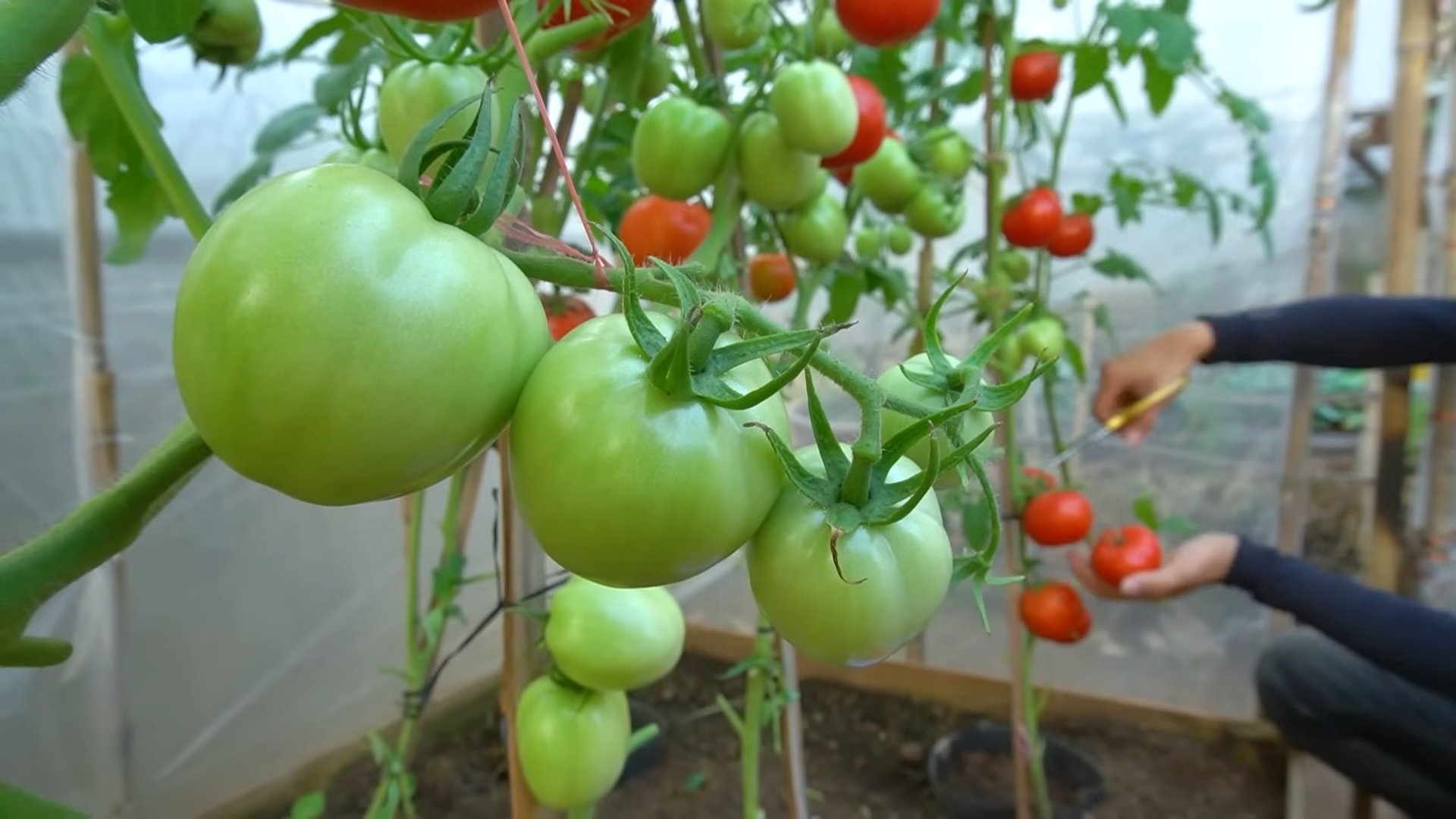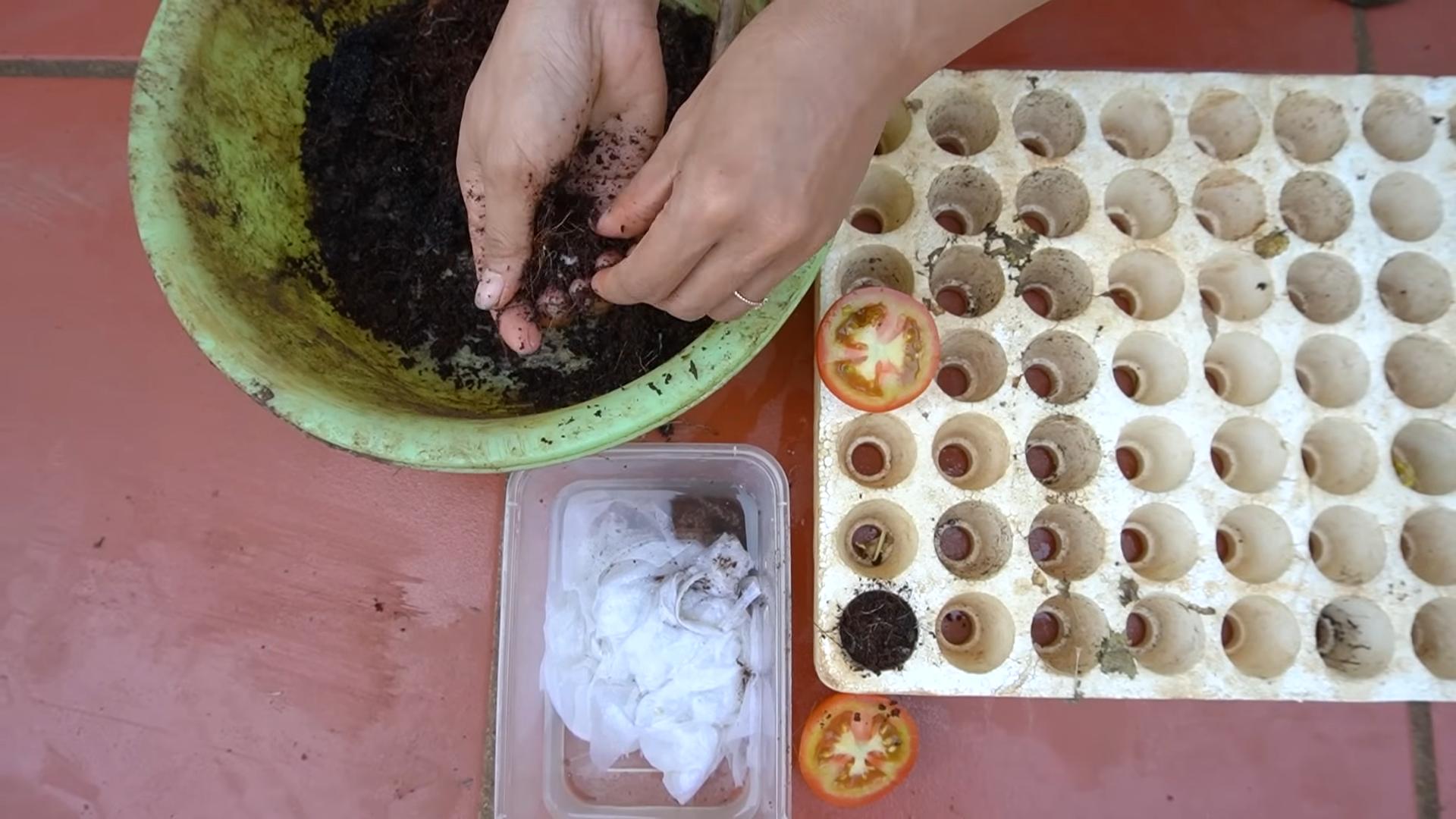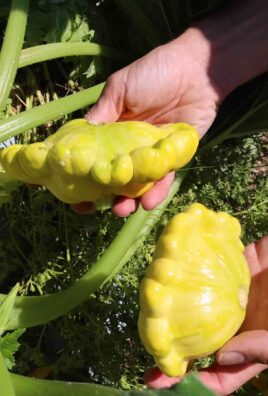Growing tomatoes year round might seem like a gardener’s impossible dream, especially if you live outside of a perpetually sunny climate. But what if I told you that juicy, sun-ripened tomatoes could be gracing your table even in the dead of winter? Forget those bland, store-bought imposters! This guide is packed with DIY tricks and hacks to extend your tomato season and, yes, even achieve year-round harvests.
The allure of fresh tomatoes isn’t new. Tomatoes, originating in South America, were initially met with suspicion in Europe, but eventually, their vibrant flavor and versatility won hearts (and stomachs!) worldwide. Now, we’re not just content with seasonal abundance; we crave that taste of summer all year long.
Why bother with the effort? Because nothing beats the taste of a homegrown tomato, bursting with flavor and nutrients. Plus, growing tomatoes year round offers a rewarding connection to nature, a sense of accomplishment, and a sustainable way to enjoy your favorite fruit (yes, it’s technically a fruit!) regardless of the season. This DIY guide will empower you with simple, effective techniques to control your growing environment, select the right varieties, and implement clever strategies to keep those red beauties coming, no matter the weather outside. Let’s get started!

Growing Tomatoes Year-Round: My Indoor Oasis Guide
Hey there, fellow tomato enthusiasts! Ever dreamt of biting into a juicy, sun-ripened tomato in the dead of winter? Well, dream no more! I’m going to share my secrets for growing tomatoes indoors, year-round. It’s not as daunting as it sounds, and the reward of fresh, homegrown tomatoes whenever you crave them is absolutely worth the effort.
Choosing the Right Tomato Variety
First things first, not all tomato varieties are created equal when it comes to indoor growing. You’ll want to opt for determinate or dwarf varieties. These types stay relatively compact, making them perfect for containers and indoor spaces. Indeterminate varieties, on the other hand, can grow incredibly tall and require extensive support, which isn’t ideal for our indoor setup.
Here are a few of my favorite determinate and dwarf tomato varieties for indoor growing:
* Tiny Tim: These are super compact and produce adorable, bite-sized tomatoes. They’re perfect for small spaces.
* Roma: A classic choice for sauces and pastes, Romas are relatively easy to grow indoors.
* Patio: As the name suggests, these are bred for container growing and produce a good yield of medium-sized tomatoes.
* Micro Tom: The smallest tomato variety available! Perfect for a windowsill garden.
* Bush Early Girl: A reliable and early-producing variety, even indoors.
Setting Up Your Indoor Tomato Garden
Now, let’s get our hands dirty! Here’s what you’ll need to create the perfect indoor tomato haven:
* Containers: Choose pots that are at least 5 gallons in size. Tomatoes need plenty of room for their roots to grow. Fabric pots are a great option because they allow for good drainage and aeration.
* Potting Mix: Don’t use garden soil! It’s too heavy and doesn’t drain well. Opt for a high-quality potting mix specifically designed for containers. I like to use a mix of peat moss, perlite, and vermiculite.
* Grow Lights: This is crucial! Tomatoes need a lot of light to thrive. LED grow lights are energy-efficient and provide the full spectrum of light that plants need.
* Fertilizer: Tomatoes are heavy feeders, so you’ll need to fertilize them regularly. Use a balanced fertilizer specifically formulated for tomatoes.
* Watering Can or Hose: For, well, watering!
* Small Fan: Air circulation is important to prevent fungal diseases.
* Tomato Cage or Stakes: Even dwarf varieties might need some support as they grow and produce fruit.
Planting Your Tomato Seeds or Seedlings
Okay, time to get planting! You have two options: starting from seeds or buying seedlings. Starting from seeds is more economical, but it requires a bit more patience.
Starting from Seeds:
1. Sow the Seeds: Fill small seed starting trays or pots with seed starting mix. Moisten the mix and sow the tomato seeds about 1/4 inch deep.
2. Provide Warmth and Light: Cover the trays with a humidity dome or plastic wrap to create a humid environment. Place them in a warm location (around 70-75°F) and under grow lights.
3. Keep the Soil Moist: Water gently to keep the soil consistently moist, but not soggy.
4. Transplant Seedlings: Once the seedlings have developed a few sets of true leaves (the leaves that look like miniature tomato leaves), they’re ready to be transplanted into larger pots.
Planting Seedlings:
1. Prepare the Pot: Fill your 5-gallon (or larger) pot with potting mix.
2. Remove the Seedling: Gently remove the seedling from its container. If the roots are tightly bound, gently loosen them.
3. Plant the Seedling: Dig a hole in the potting mix large enough to accommodate the root ball. Place the seedling in the hole and backfill with potting mix.
4. Water Thoroughly: Water the seedling thoroughly after planting.
Caring for Your Indoor Tomato Plants
Now comes the ongoing care. This is where you’ll really nurture your little tomato plants and watch them flourish.
Light:
* Provide Adequate Light: Tomatoes need at least 14-16 hours of light per day. Position your grow lights about 6-12 inches above the plants. As the plants grow, adjust the lights accordingly. I use a timer to ensure consistent light exposure.
Watering:
* Water Regularly: Water your tomato plants when the top inch of soil feels dry to the touch. Avoid overwatering, as this can lead to root rot. Water deeply, allowing the water to drain out of the bottom of the pot.
Fertilizing:
* Feed Your Plants: Start fertilizing your tomato plants about two weeks after transplanting. Use a balanced fertilizer (e.g., 10-10-10) diluted to half strength. Fertilize every two weeks. Once the plants start producing flowers, switch to a fertilizer with a higher phosphorus content (e.g., 15-30-15) to promote fruit development.
Pollination:
* Hand-Pollinate: Since you don’t have bees or wind indoors, you’ll need to hand-pollinate your tomato plants. This is surprisingly easy! You can use a small paintbrush or cotton swab to gently transfer pollen from one flower to another. Alternatively, you can gently shake the plants to release the pollen. I usually do this every day or two when the plants are flowering.
Pruning:
* Prune Suckers: Suckers are small shoots that grow in the “V” between the main stem and the branches. These suckers can steal energy from the plant and reduce fruit production. Remove them regularly by pinching them off with your fingers.
Air Circulation:
* Keep the Air Moving: Good air circulation is essential to prevent fungal diseases. Place a small fan near your tomato plants to keep the air moving.
Support:
* Provide Support: As your tomato plants grow, they may need support to prevent them from falling over. Use tomato cages or stakes to support the plants.
Dealing with Pests and Diseases
Even indoors, your tomato plants can be susceptible to pests and diseases. Here’s how to deal with some common problems:
* Aphids: These tiny insects can suck the sap from your plants. You can control aphids by spraying them with insecticidal soap or neem oil.
* Whiteflies: These small, white, flying insects can also damage your plants. Use yellow sticky traps to catch whiteflies.
* Spider Mites: These tiny mites can cause yellowing and stippling of the leaves. Increase humidity and spray the plants with insecticidal soap or neem oil.
* Fungal Diseases: Fungal diseases, such as powdery mildew and early blight, can be a problem in humid environments. Improve air circulation and avoid overwatering. You can also spray the plants with a fungicide.
Harvesting Your Tomatoes
The moment you’ve been waiting for! Harvesting your own homegrown tomatoes is incredibly satisfying.
* Harvest When Ripe: Tomatoes are ready to harvest when they are fully colored and slightly soft to the touch. Gently twist the tomato off the vine.
* Enjoy Your Harvest: Enjoy your fresh, homegrown tomatoes in salads, sandwiches, sauces, or just eat them straight off the vine!
Troubleshooting Tips
Sometimes, things don’t go exactly as planned. Here are a few troubleshooting tips to help you overcome common challenges:
* Yellowing Leaves: This could be a sign of overwatering, underwatering, nutrient deficiency, or pest infestation. Check the soil moisture, fertilize your plants, and inspect them for pests.
* Blossom End Rot: This is caused by a calcium deficiency. Add calcium to the soil or use a calcium-rich fertilizer.
* Lack of Fruit: This could be due to insufficient light, poor pollination, or nutrient deficiency. Make sure your plants are getting enough light, hand-pollinate them regularly, and fertilize them properly.
* Leggy Growth: This is usually a sign of insufficient light. Move your grow lights closer to the plants or provide more light.
My Personal Tips for Success
Over the years, I’ve learned a few extra tricks that have really helped me succeed with indoor tomato growing:
* Rotate Your Plants: Rotate your plants regularly to ensure that all sides get equal exposure to light.
* Use a Soil Moisture Meter: This can help you avoid overwatering or underwatering.
* Keep a Journal: Track your progress, note any problems, and record what you did to solve them. This will help you learn from your mistakes and improve your growing techniques.
* Don’t Give Up! Indoor tomato growing can be challenging, but it’s also incredibly rewarding

Conclusion
So, there you have it! Mastering the art of growing tomatoes year-round isn’t just a gardener’s dream; it’s an achievable reality with a little ingenuity and the right approach. We’ve explored the core principles, from selecting the right varieties and providing optimal lighting to maintaining consistent temperature and humidity. The beauty of this DIY approach lies in its adaptability. You’re not confined to a specific season or climate. You’re creating your own microclimate, a tomato-friendly haven right in your home.
Why is this DIY trick a must-try? Because it empowers you to enjoy the unparalleled flavor of homegrown tomatoes whenever you crave them. Forget the bland, commercially grown varieties that lack the sun-ripened sweetness. Imagine biting into a juicy, vibrant tomato in the dead of winter, a burst of summer on your palate. That’s the promise of year-round tomato growing.
But the benefits extend beyond just taste. You’re also gaining control over the growing process, ensuring that your tomatoes are free from harmful pesticides and herbicides. You’re reducing your carbon footprint by sourcing your produce locally (or rather, hyper-locally!). And you’re engaging in a rewarding and therapeutic activity that connects you with nature, even indoors.
Don’t be afraid to experiment! Try different tomato varieties to find the ones that thrive best in your indoor environment. Cherry tomatoes and dwarf varieties are often excellent choices for indoor growing. Consider adding companion plants like basil or marigolds to your indoor garden to deter pests and enhance the flavor of your tomatoes. Explore different hydroponic systems or soil mixes to optimize nutrient delivery. The possibilities are endless!
We’ve covered a lot of ground, from seed starting to pollination techniques. Remember, patience is key. Growing tomatoes year-round requires dedication and attention to detail. But the rewards are well worth the effort. The satisfaction of harvesting your own delicious tomatoes, regardless of the season, is truly unparalleled.
Now it’s your turn! We encourage you to embark on this exciting journey of year-round tomato cultivation. Don’t be intimidated by the prospect. Start small, learn as you go, and most importantly, have fun! We’re confident that you’ll be amazed by what you can achieve.
And we want to hear about your experiences! Share your successes, your challenges, and your tips in the comments below. Let’s create a community of year-round tomato growers, sharing our knowledge and inspiring each other to cultivate the most delicious and rewarding indoor gardens possible. Let us know what DIY tomato growing methods you are using.
Frequently Asked Questions (FAQ)
What are the best tomato varieties for year-round indoor growing?
Choosing the right tomato variety is crucial for success. Determinate or dwarf varieties are generally preferred for indoor growing because they are more compact and require less space. Some excellent choices include:
* **Tiny Tim:** A very small, compact plant that produces abundant cherry tomatoes.
* **Roma:** A classic paste tomato that is relatively easy to grow indoors.
* **Patio:** A compact variety specifically bred for container gardening.
* **Tumbling Tom:** Ideal for hanging baskets, producing cascading cherry tomatoes.
* **Micro Tom:** The smallest tomato variety, perfect for very small spaces.
Consider the size of your growing space and the type of tomatoes you prefer when making your selection. Experiment with different varieties to find the ones that thrive best in your specific indoor environment.
How much light do indoor tomatoes need?
Tomatoes require a significant amount of light to thrive, typically 6-8 hours of direct sunlight per day. However, during the shorter days of winter, supplemental lighting is essential. LED grow lights are an excellent option because they are energy-efficient and provide the full spectrum of light that tomatoes need. Aim for a light intensity of at least 200 watts per square foot. Position the lights close to the plants (but not so close that they burn the leaves) and adjust the height as the plants grow. A timer can automate the lighting schedule.
What is the ideal temperature for growing tomatoes indoors?
Tomatoes prefer daytime temperatures between 70-80°F (21-27°C) and nighttime temperatures between 60-70°F (15-21°C). Avoid exposing your plants to extreme temperature fluctuations. If your indoor environment is too cold, consider using a space heater or heat mat to warm the soil. If it’s too hot, improve ventilation or use a fan to circulate the air.
How often should I water my indoor tomato plants?
Watering frequency depends on several factors, including the size of the pot, the type of soil, and the temperature and humidity of your indoor environment. As a general rule, water your tomato plants when the top inch of soil feels dry to the touch. Water deeply, until water drains out of the bottom of the pot. Avoid overwatering, as this can lead to root rot.
How do I pollinate my indoor tomato plants?
Tomatoes are self-pollinating, but they often need a little help to pollinate indoors, where there are no bees or wind to assist. You can hand-pollinate your plants by gently shaking the stems or using a small brush to transfer pollen from one flower to another. Alternatively, you can use a small fan to circulate the air around the plants, which will help to distribute the pollen.
What kind of fertilizer should I use for indoor tomatoes?
Tomatoes are heavy feeders and require regular fertilization. Use a balanced fertilizer with an NPK ratio of 10-10-10 or 14-14-14. Start fertilizing your plants when they begin to flower and continue throughout the growing season. Follow the instructions on the fertilizer label carefully to avoid over-fertilizing. You can also supplement with organic fertilizers like compost tea or fish emulsion.
How do I deal with pests and diseases on my indoor tomato plants?
Indoor tomato plants are less susceptible to pests and diseases than outdoor plants, but they can still be affected. Common pests include aphids, whiteflies, and spider mites. Common diseases include powdery mildew and blossom end rot. Inspect your plants regularly for signs of pests or diseases. If you find any, treat them promptly with an appropriate insecticide or fungicide. Organic options include neem oil, insecticidal soap, and copper fungicide. Good air circulation and proper watering can also help to prevent pests and diseases.
What is blossom end rot and how can I prevent it?
Blossom end rot is a common problem in tomatoes, characterized by a dark, leathery spot on the bottom of the fruit. It is caused by a calcium deficiency, which can be due to inconsistent watering, poor soil drainage, or a lack of calcium in the soil. To prevent blossom end rot, ensure that your tomato plants receive consistent watering, improve soil drainage, and add calcium to the soil by incorporating bone meal or crushed eggshells.
How long does it take to grow tomatoes indoors?
The time it takes to grow tomatoes indoors depends on the variety, the growing conditions, and your level of experience. Generally, it takes about 60-85 days from transplanting to harvest. Cherry tomatoes tend to ripen faster than larger varieties.
Can I grow tomatoes indoors without soil?
Yes, you can grow tomatoes indoors without soil using hydroponics. Hydroponics is a method of growing plants in water or other nutrient-rich solutions without soil. There are several different types of hydroponic systems, including deep water culture, nutrient film technique, and drip systems. Hydroponics can be a very efficient way to grow tomatoes indoors, as it allows you to control the nutrient levels and water supply more precisely.
What are some common mistakes to avoid when growing tomatoes indoors?
Some common mistakes to avoid when growing tomatoes indoors include:
* Not providing enough light.
* Overwatering or underwatering.
* Not fertilizing regularly.
* Not providing adequate support for the plants.
* Not pollinating the flowers.
* Ignoring pests and diseases.
By avoiding these mistakes, you can increase your chances of success and enjoy a bountiful harvest of homegrown tomatoes year-round.





Leave a Comment